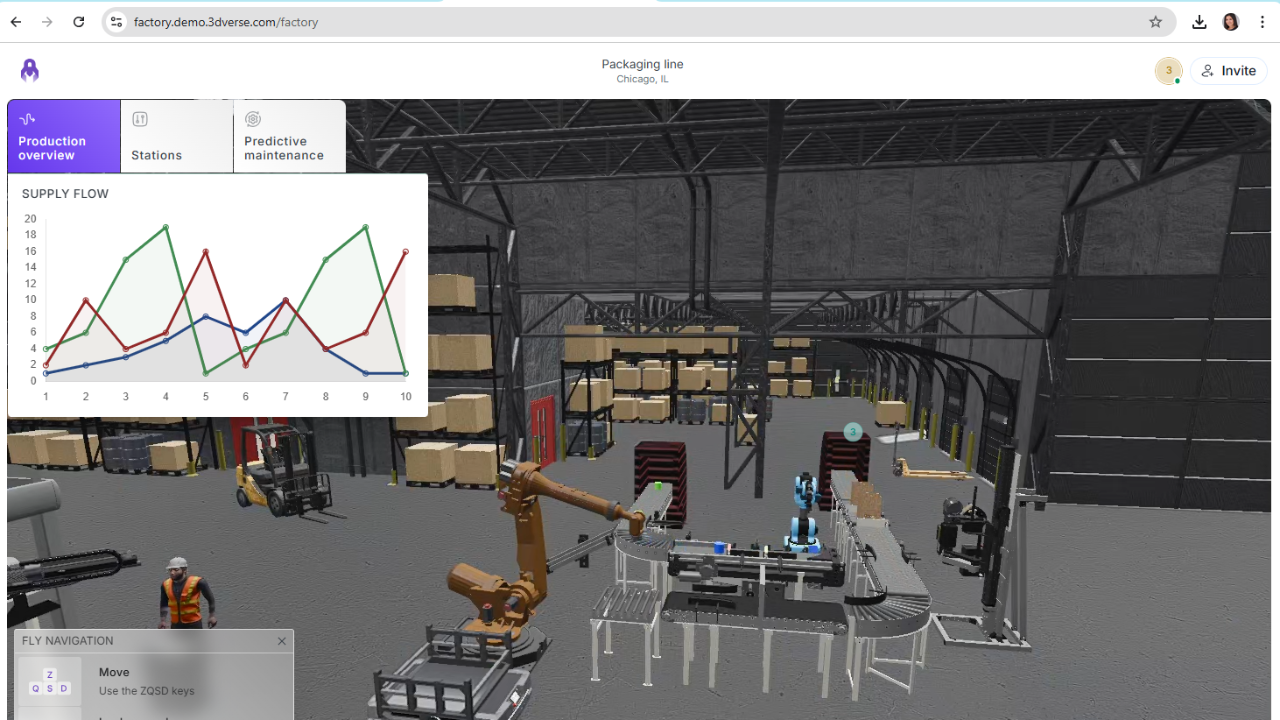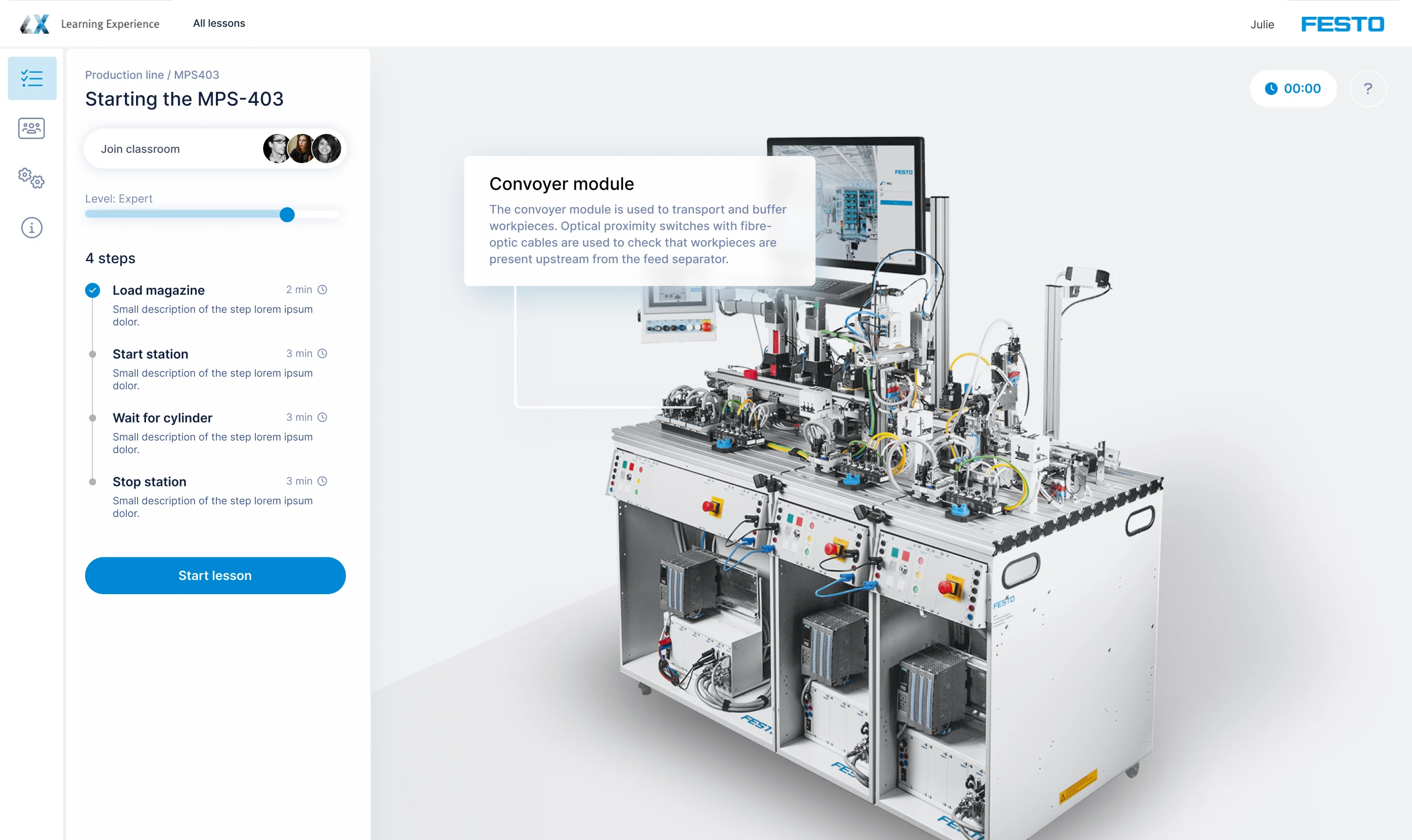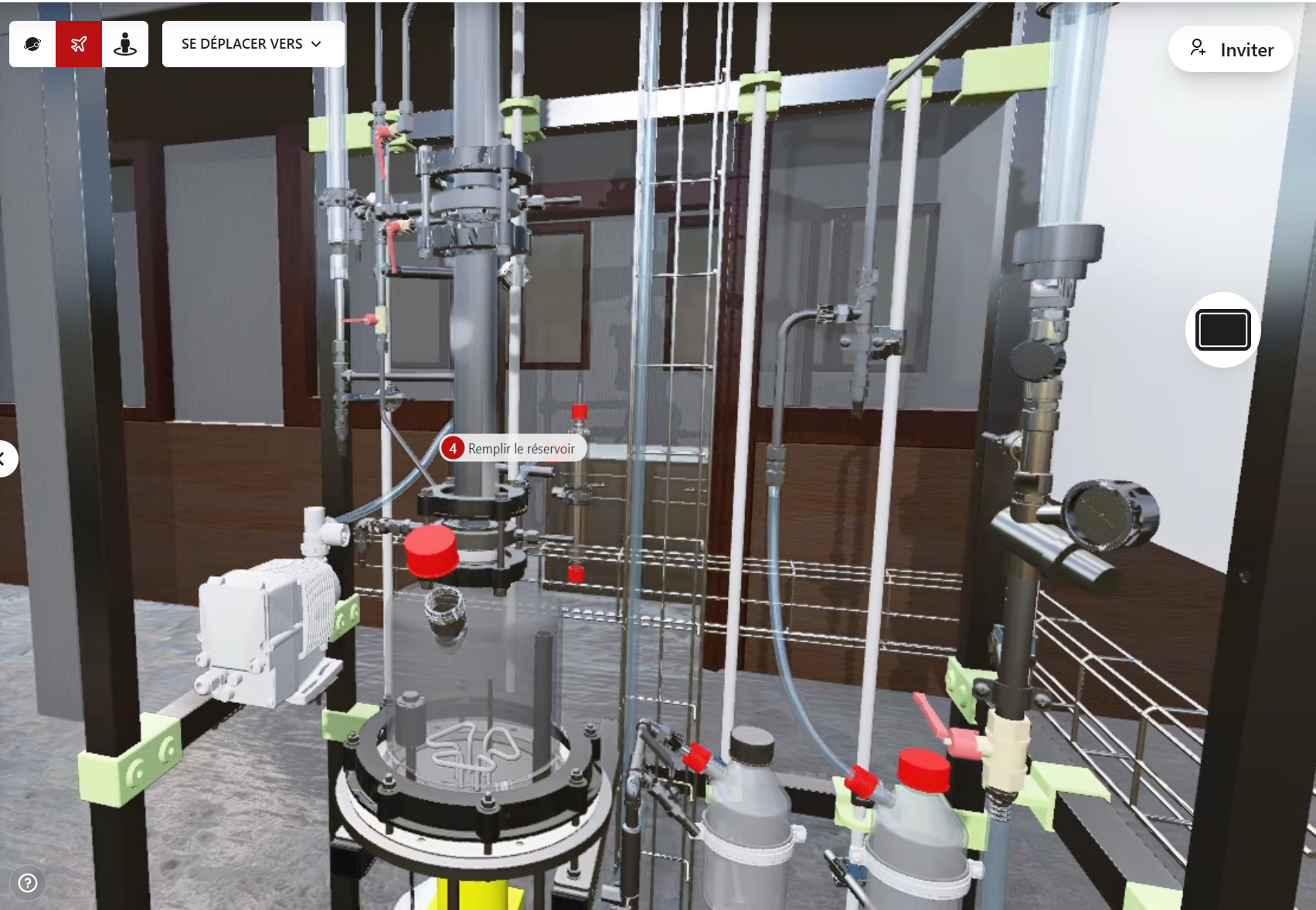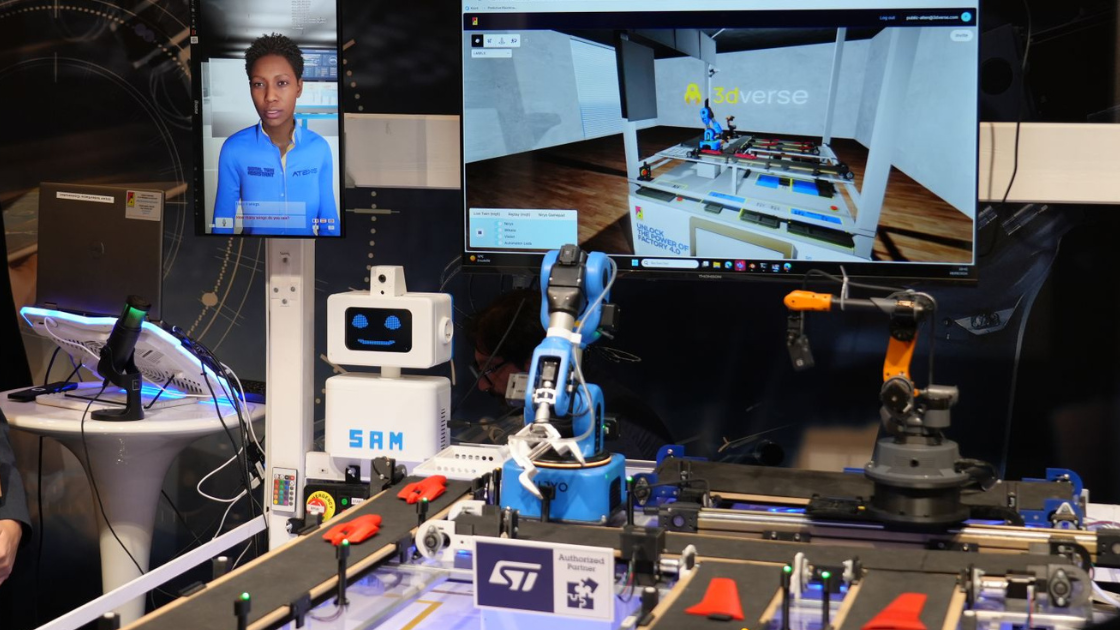
AI Integration
3dverse is not just a viewing tool; it’s the cloud-native operating system designed to turn your large-scale 3D digital twins into intelligent, automated assets. By providing the infrastructure to natively deploy advanced AI and machine learning models for real-time defect detection via Computer Vision, prescriptive action from predictive maintenance algorithms, and rapid generation of synthetic data for training for the industrial metaverse. This integration can instantly converts raw data into actionable intelligence, drastically reducing manual errors and accelerating the time-to-market for data-driven operational improvements.

Large dataset & Multi-formats
3dverse is built to handle large-scale 3D environments without significant performance loss.
Multi-Format Compatibility: Combine IFCs, OBJs, and other file formats in the same scene. View 3dverse file support list.
High-Performance Geospatial Streaming: Render large-scale geospatial datasets without performance loss, maintaining visual fidelity. 400 million polygons & hundreds of GB of textures.

Real-Time Collaboration
Natively multi-user - all rendered from a single GPU session in the cloud.
Multi-User: Multiple users can join the same 3D environment in real-time, each with independent camera controls.
Synchronized Interaction: Edits and actions are instantly visible to all participants, maintaining a persistent environment.

Real-Time Simulation
Simulate complex environments in real-time, powered by live data and synchronized IoT API feeds.
Integrated IoT and Data Feeds: Connect live data sources, including IoT sensors (OPC UA, MQTT, REST APIs), for accurate, real-world simulations.
Dynamic Simulation Logic: Run real-time physics, animation, and interaction logic in a cloud-native environment.
Scalable Simulation Infrastructure: Simulate complex environments with synchronized behaviors and data-driven interactions.

High Quality Textures
3dverse delivers cloud-based texture rendering and is optimized to maintain performance across devices. It can handle scenes with millions of triangles, ensuring detailed geometry is displayed without requiring local GPU processing.
Cloud-Native Texture Streaming: High-resolution textures are dynamically streamed from the cloud, ensuring sharp, detailed visuals without local processing.
Triangle-Based Geometry Optimization: Complex surfaces are rendered efficiently using high-density triangle meshes, preserving intricate details.
Cross-Device Compatibility: Experience consistent texture quality on any device, from desktop to mobile, without performance degradation.

DICOM & Voxel Rendering
3dverse supports the ingestion and visualization of volumetric medical imaging data, including DICOM files.
Multi-Layer Visualization: Load and visualize DICOM files alongside voxel representations for accurate medical imaging.
Mesh Generation from Voxel Data: Convert volumetric data into accurate 3D meshes, maintaining precision and detail.
Parallel Representation: Simultaneously display original voxel data and reconstructed meshes, ensuring complete visualization control.
Features
A Cloud-Native RT3D Operating System Without the Limits of Traditional Engines
Unlike traditional 3D engines, 3dverse streams your scenes directly from the cloud. No local installs, no hardware limitations- just accessible 3D from any device.
Discover more technical features
More featuresExplore Use Cases
What you’ve seen here is the foundation. 3dverse enables not just the rendering of 3D scenes, but the deployment of fully interactive, data-driven applications at scale. Whether you're powering large-scale digital twins, simulating complex environments, or building collaborative workflows across disciplines, 3dverse adapts to your application's needs, no matter the size or complexity of the scene.
→ Explore real-world applications and discover how teams are building next-generation 3D solutions with 3dverse.
Manufacturing
How did Festo developed device-agnostic immersive training?
By reducing training costs and accelerating workforce expertise with immersive, factory-grade simulations.

Manufacturing
How do educators prototype immersive learning without heavy infrastructure?
By improving learning outcomes through interactive digital training accessible on any device.

Manufacturing
How does ALTEN connect the real and virtual worlds for Industry 4.0 with low latency?
By streamlining factory operations and enabling seamless interoperability with low-latency communication protocols.
